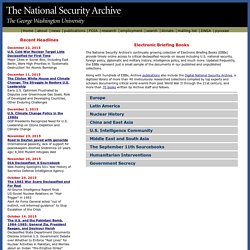

Early Twentieth Century Mexican Immigration to the U.S. · HERB: Resources for Teachers. Between 1900 and 1930, political turmoil in Mexico combined with the rise of agribusiness in the American Southwest to prompt a large-scale migration of Mexicans to the U.S.

There were reasons on both sides of the border. Transformations in the Mexican economy under President Porfirio Díaz left many peasants landless and desperate; when he was overthrown in 1911, ten percent of Mexico’s population departed for the U.S. There they found work in mining and agribusiness, which were transforming the economy of the Southwest from a region of small, entrepreneurial landholders into one dominated by large enterprises employing wage labor.
The documents in this collection explore the social, political, and economic dimensions of the first mass migration of Mexicans to the United States. Migrants found themselves in a strange position—desired as workers by large business concerns but facing intense legal, political, and social discrimination. Mexico - Country Profile - 2014. Mexico Economy, Politics and GDP Growth Summary - The Economist Intelligence Unit. dLOC Home - Digital Library of the Caribbean. Mexican-American War and the Media. London Times January - December 1845 Index Year/Month/Day Page/Column subject LT 1845/1/2 3e Annexation of Texas, bill on conditions LT 1845/1/2 4a Annexation of Texas and the new President's message LT 1845/1/8 6a Mr.

LT 1845/1/11 6f Mexico, miscellaneous news LT 1845/1/14 4a President's message. Historical Text Archive: Electronic History Resources, online since 1990. Bracero History Archive.
Mexico: Photographs, Manuscripts, and Imprints. Mexico: Photographs, Manuscripts, and Imprints DeGolyer Library About the Collection Overview Mexico: Photographs, Manuscripts, and Imprints provides a sample of the photographs, images, albums, books, pamphlets, manuscripts, and more, relating to Mexico held by SMU's DeGolyer Library.

DeGolyer Library digital collections are part of CUL Digital Collections, which contain thousands of digitized photographs, manuscripts, imprints, and works of art held by SMU's Central University Libraries special collections. Collection Materials This digital collection contains many items related to the Mexican Revolution. The collection also contains 43 photographic prints of the Mexican Revolution from an album by Manuel Ramos (1874-1945) illustrating damage in Mexico City during the February, 1913 uprising, also called La decena tragica ("the Ten Tragic Days") against President Francisco I. Holdings and Highlights Related Collections. Nican Mopohua: Juan Diego & the Virgin of Guadalupe.
Smoggy Mexico City Street - AZ004886 - Droits gérés. A major street in the Miguel Hidalgo area of Mexico City is clogged with traffic and smog during the morning rush hour. | Location: Delegacion Miguel Hidalgo, Mexico City, Mexico. 9f2a810a-7688-4422-9fc5-b89b66df16fa false Date Photographed: ca. 1986 Model Released: No Release Property Released: Credit: © Stephanie Maze/CORBIS License Type: Rights Managed (RM) Max File Size: Restrictions: Not available for any use relating to child abuse.

Uncompressed file sizes and pixel dimensions are approximate. The American Presidency Project. Electronic Briefing Books: compilations of declassified documents. Srebrenica conference documents detail path to genocide from 1993 to 1995.Documents show contradictions between New York UN declarations and ground realities, resistance from member states to back up resolutions with troops and planes, constant reluctance to use air strikes abetted by divisions within U.S. government, allies.

Anatoly S. Chernyaev Diary, 1975 The Uncertain Future of De'tente Perestroika in the Soviet Union: 30 Years On Documents show extraordinary achievements, Spectacular missed opportunities. Project Sapphire 20th Anniversary More than a half-ton of weapons-grade uranium removed from Kazakhstan in 1994. The Fall of the Berlin Wall, 25th Anniversary Documents show accident and contingency, anxiety in world capitals The Yuri Orlov File Human Rights Legend and Distinguished Physicist Turns 90. Anatoly S. Anatoly S. The 1983 War Scare: "The Last Paroxysm" of the Cold War Part II Part II: "Blue's use of nuclear weapons did not stop Orange's aggression. " Anatoly S. U.S. U.S. U.S. The Mexico Project. 100 Years: The Rockefeller Foundation. The Rockefeller Foundation (RF)’s Mexican Agriculture Program (MAP), which operated from 1943 to 1965, is now credited with launching the global transformation known as the “Green Revolution.”

MAP was the RF’s first intensive agricultural endeavor and its first operating program since the International Health Division (IHD). The success of MAP eventually encouraged RF Trustees to discontinue the IHD in order to place agriculture at the center of an expanded model of public health research and promotion. Hybrid corn seed ready for distribution, Corn Program, Agrarian University, La Molina, (Peru), 1965 From the beginning MAP focused on techniques that could be transferred to various regions and climates. Within thirty years MAP’s hybrid seeds and soil improvement methods spread into Latin American and Southeast Asia, changing economies and offering hope for food self-sufficiency in developing nations. Three Scientists in a Station Wagon IHD Associate Director John A. J. Corn Comes First.
Senate-1995-Political corruption and drug trafficking in Mexico.